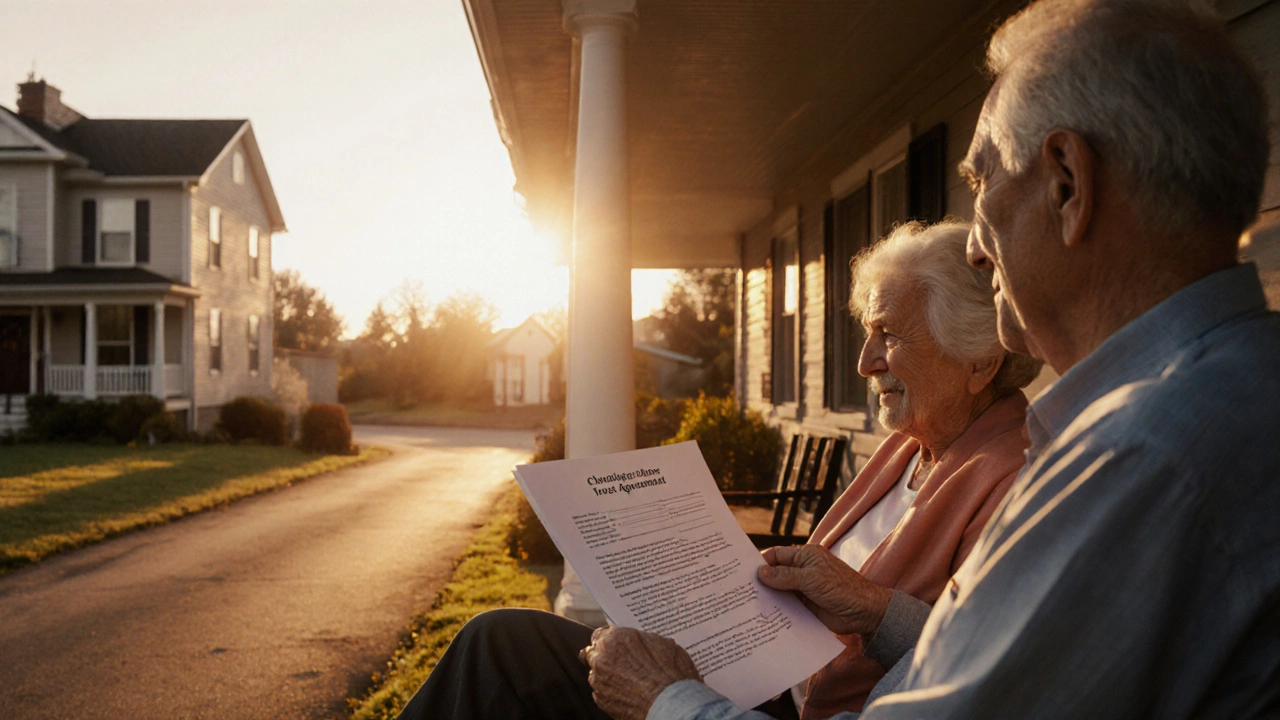House in Trust: What It Means and How It Helps Communities
When someone puts a house in trust, a legal arrangement where property is held by a trustee for the benefit of others. Also known as charitable property trust, it lets families, churches, or nonprofits use the home without owning it outright—keeping it safe from sale, debt, or eviction. This isn’t just a legal trick. It’s a real way to keep housing stable for people who need it most—like elderly neighbors, single parents, or volunteers working in underserved areas.
A charitable trust, a legal structure used to manage assets for public good often holds these houses. The trustee, usually a church or nonprofit, manages repairs, rent, or free use based on need. No profit. No speculation. Just purpose. In places like Varanasi, where housing is tight and poverty runs deep, this model keeps homes in the hands of those who live in them—not investors. It’s similar to how community housing, housing managed by local groups for local needs works in other countries, but rooted in faith and service.
Why does this matter? Because a house isn’t just bricks and mortar. It’s safety. It’s dignity. It’s where kids do homework, elders rest, and volunteers find shelter after long days helping others. When a house is in trust, it stays part of the community forever. You can’t sell it. You can’t kick someone out for missing a payment. You can’t turn it into a short-term rental. That’s power. That’s protection.
This idea connects directly to the work we see in posts about outreach workers, food banks, and homeless programs. When someone is helping a family get off the streets, having a house in trust means they don’t have to start from zero every time. It’s the quiet backbone of long-term change. It’s not flashy. It doesn’t make headlines. But it saves lives.
Some people think trusts are only for the rich. That’s not true. In faith-based networks, they’re tools for justice. A church might receive a donated home and put it in trust so a widow can live there rent-free. A volunteer group might hold a property so youth workers have a place to stay during outreach nights. It’s simple. It’s smart. And it works.
Below, you’ll find real examples of how this works—not in theory, but in practice. From legal setups to day-to-day use, these posts show how a house in trust becomes more than property. It becomes a promise.

Can You Put a House in a Charitable Remainder Trust? Here's How It Works
- Oct, 27 2025
- 0
Putting your house in a charitable remainder trust lets you keep living there, get tax breaks, and support a charity after you're gone. Learn how it works, who it's for, and what the real benefits are.
Categories
- Volunteering (40)
- Environment (36)
- Youth Programs (32)
- Charity Events (30)
- Homelessness (28)
- Charitable Organizations (26)
- Community Outreach (26)
- Community Support (18)
- Finance (12)
- Education (10)
Archives
- December 2025 (7)
- November 2025 (8)
- October 2025 (23)
- September 2025 (4)
- August 2025 (8)
- July 2025 (31)
- June 2025 (29)
- May 2025 (30)
- April 2025 (31)
- March 2025 (30)
- February 2025 (28)
- January 2025 (33)
- charity events
- after-school clubs
- community outreach
- community service
- charitable trust
- philanthropy
- volunteering
- environmental groups
- homeless shelters
- volunteer opportunities
- community engagement
- mental health
- charity
- student engagement
- charitable giving
- community help
- donations
- volunteer
- estate planning
- youth organizations